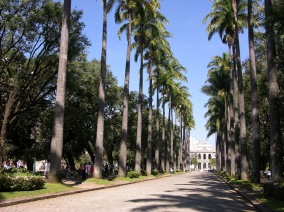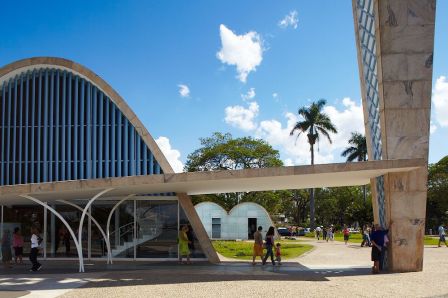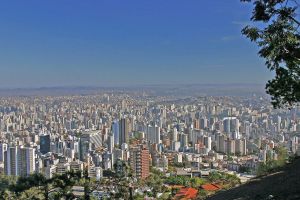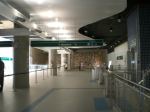Belo Horizonte: Architecture in Brazil’s First Planned City
June 10, 2012 2 Comments
Long before Brasilia, Belo Horizonte was Brazil first planned city. The country’s third-largest, it was developed in the 1890s when the state capital of Minas Gerais was relocated from Ouro Preto. Today it is a sprawling city filled with an eclectic mix of neoclassical, modernist and contemporary architecture.

Parque Municipal, Belo Horizonte’s central park, is located at the city center.
Neoclassical Capital City on a Grid
Modern “Beagá” features a mixture of contemporary and neoclassical buildings, and hosts several modern Brazilian architectural icons, most notably the Pampulha Complex. Belo Horizonte was laid out as a neoclassical city, modeled on the grid system, and Aarão Reis sought inspiration in the urban design of Washington, D.C, and Paris. This is evident in BH’s wide, tree-lined avenues and the prominence of parks and squares in urban life. Belo Horizonte has an octagonal urban network cut by diagonals and is “closed” by a circular ring, the Perimeter Avenue.
Modernist Architecture and International Attention
The 1940s and 1950s witnessed the physical and demographic expansion of the city past the original boundaries envisioned by Reis, which was translated into the creation of new suburbs, such as Pampulha and Cidade Jardim, the residential areas of the elite. In 1941, Juscelino Kubitschek de Oliveira, then the Mayor of Belo Horizonte Brazil, asked his young friend Oscar Niemeyer to design three buildings for a new suburb that Kubitschek wanted to build in Pampulha, a neighborhood named for the attractive lake at its center. Completed in 1943, the project was a trio of buildings set around the lake. The first was Igreja de Sao Francisco de Asis, another a dance hall and restaurant on the lake and the third a large casino. Together they set the tone for the development of that district.
With its hangar shaped design, the Igreja de Sao Francisco de Asis is easily the most impressive. As the first listed first listed modern architectural monument in Brazil, it consists of four undulating concrete parabolas with outdoor mosaics. Niemeyer was inspired by French poet and diplomat Paul Chandel, who called a church ‘God’s hangar on earth.’ The church was not without controversy and would not be consecrated until 1959.
Urbanization and Economic Growth
Brazil’s third-largest city is well below the international radar compared with Rio and São Paulo. But things are changing in Belo Horizonte, as the economic boom continues to attract major national and foreign investment to the city. The resulting rapid urbanization and economic boom has left its mark on the city’s urban geography, as skyscrapers sprout up around the city and traffic increases.






